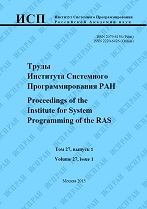|
The effect of numerical dissipation on the predictive accuracy of wall-modelled large-eddy simulation
T. D. Mukha
Chalmers University of Technology
Abstract:
The effect of numerical dissipation on the predictive accuracy of wall-modelled large-eddy simulation is investigated via systematic simulations of fully-developed turbulent channel flow. A total of 16 simulations are conducted using the open-source computational fluid dynamics software OpenFOAM. Four densities of the computational mesh are considered, with four simulations performed on each, in turn varying in the amount of numerical dissipation introduced by the numerical scheme used for interpolating the convective fluxes. The results are compared to publicly-available data from direct numerical simulation of the same flow. Computed error profiles of all the considered flow quantities are shown to vary monotonically with the amount of dissipation introduced by the numerical schemes. As expected, increased dissipation leads to damping of high-frequency motions, which is clearly observed in the computed energy spectra. But it also results in increased energy of the large-scale motions, and a significant over-prediction of the turbulent kinetic energy in the inner region of the boundary layer. On the other hand, dissipation benefits the accuracy of the mean velocity profile, which in turn improves the prediction of the wall shear stress given by the wall model. Thus, in the current framework, the optimal choice for the dissipation of the numerical schemes may depend on the primary quantity of interest for the conducted simulation. With respect to the resolution of the grid, the change in the accuracy is much less predictable, and the optimal resolution depends on the considered quantity and the amount of dissipation introduced by the numerical schemes.
Keywords:
large-eddy simulation, turbulence, wall modelling, numerical dissipation, channel flow.
Citation:
T. D. Mukha, “The effect of numerical dissipation on the predictive accuracy of wall-modelled large-eddy simulation”, Proceedings of ISP RAS, 31:6 (2019), 187–194
Linking options:
https://www.mathnet.ru/eng/tisp477 https://www.mathnet.ru/eng/tisp/v31/i6/p187
|

| Statistics & downloads: |
| Abstract page: | 97 | | Full-text PDF : | 33 | | References: | 20 |
|




 Contact us:
Contact us: Terms of Use
Terms of Use
 Registration to the website
Registration to the website Logotypes
Logotypes








 Citation in format
Citation in format 